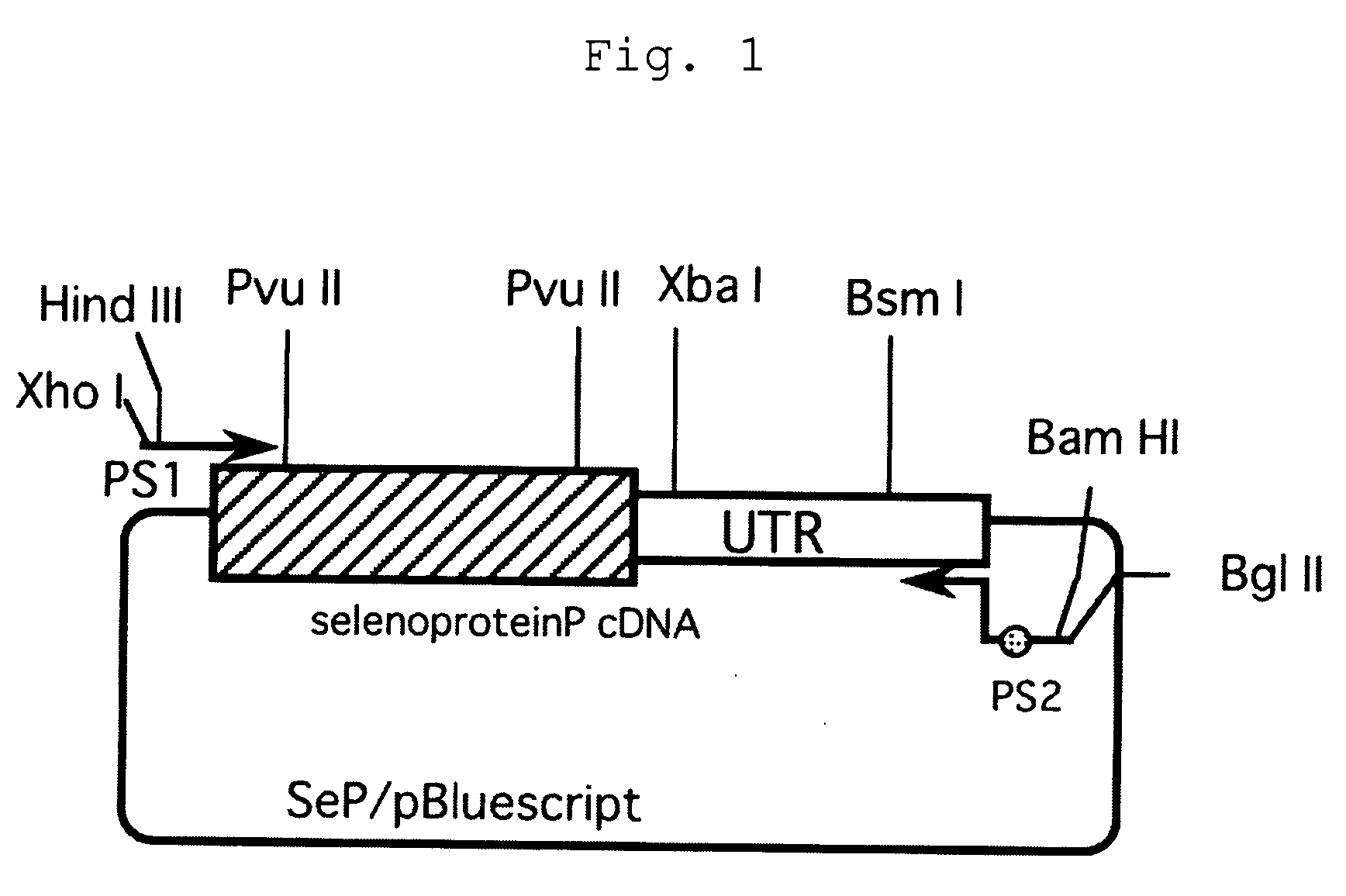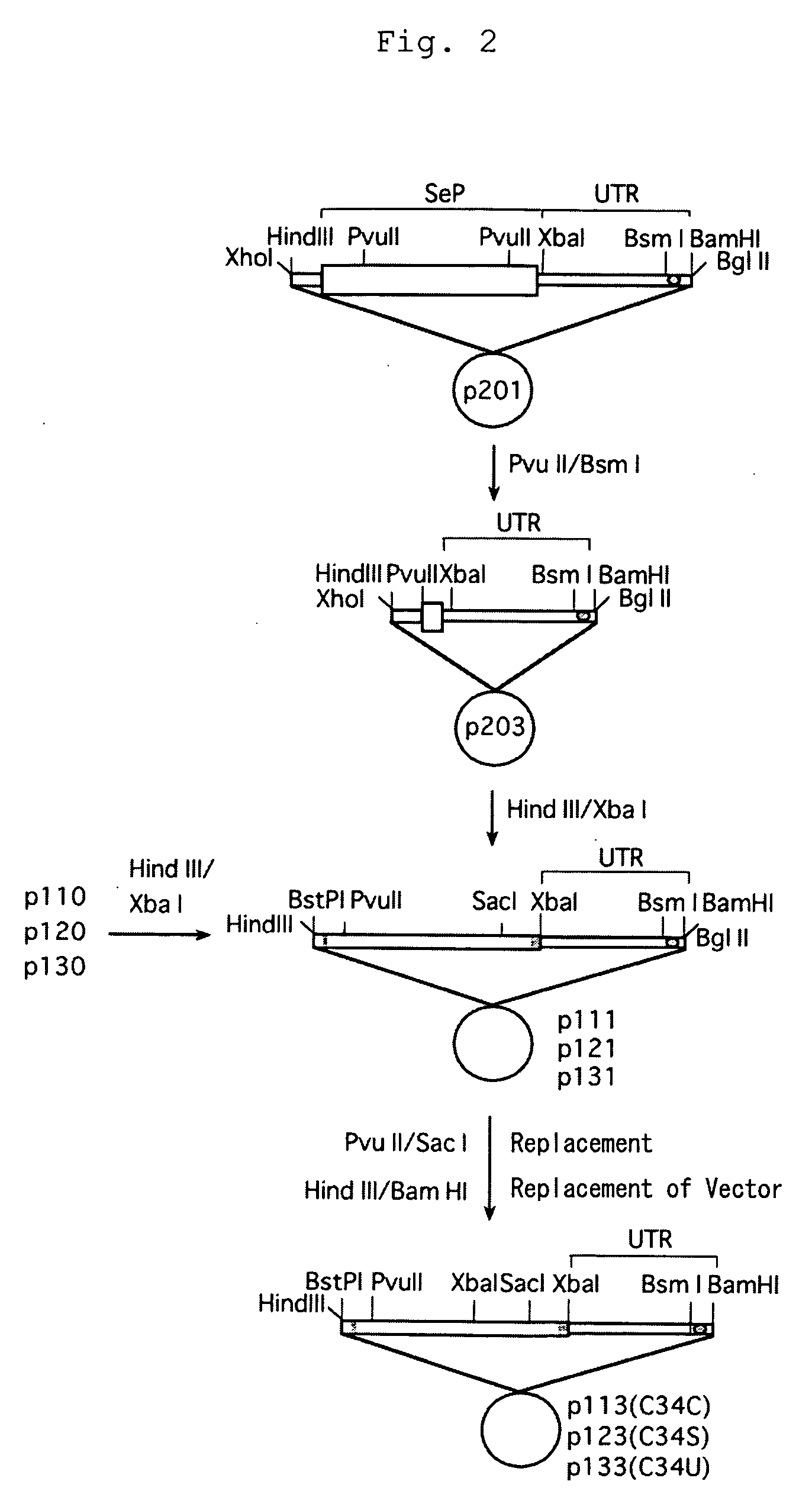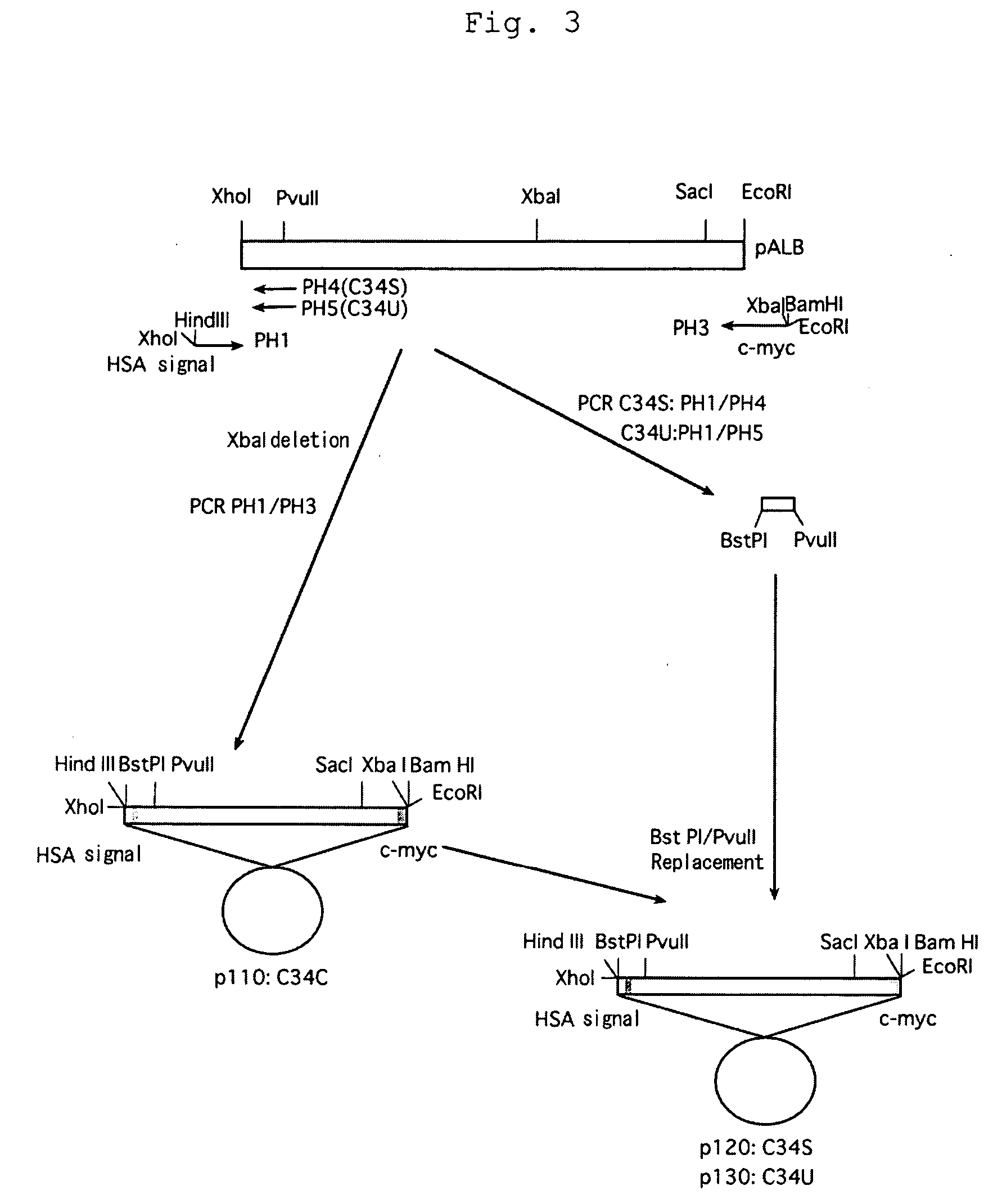Novel selenocysteine-containing protein
- Summary
- Abstract
- Description
- Claims
- Application Information
AI Technical Summary
Benefits of technology
Problems solved by technology
Method used
Image
Examples
example 1
(Construction of Modified Albumin Gene)
(1) Vector Containing Selenoprotein P (SeP) 3′-Untransnlated Region
[0028] In order to introduce restriction enzyme XhoI / HindIII recognition sites at the 5′-end of human SeP cDNA and BamHI / BglII recognition sites and mouse selenoprotein P poly A addition signal at the 3′-end, PCR was performed using plasmid SeP / pBluescript with inserted human SeP cDNA (by courtesy of Dr. K. Takahashi, an assistant professor of pharmacy at Hokkaido University) as a template, with primers having the following sequences (FIG. 1):
PS1:5′CCGCTCGAGAAGCTTGGCACGAGGCAGGCCCGTTGGAAGTGGTTGTGACAAC(SEQ ID NO: 1)PS2:5′GGAAGATCTGGATCCGCGGCCGCTGAGCATGCTGAACAATAAAGACACACACT(SEQ ID NO: 2)TGAAAGGTTTTAAAATTGCATTTTTATTGAATTTATTTGGACAAATCCGTAC.
[0029] Using Astec program temp control system PC-800 for a thermal cycler and LATaq (TAKARA) for a DNA polymerase, PCR was performed 25 cycles of 96° C. for 20 seconds and 68° C. for 3 minutes and then 1 cycle of 68° C. for 5 minutes, usin...
example 2
(Expression of Modified Albumin Gene)
(1) Introduction of Expression Vector into Cells
[0037] A DNA to be introduced was prepared as described below. E. coli JM109 (TOYOBO) cells were transformed with each of the constructed expression vectors C34C, C34S or C34U, shake-cultured on 250 ml LB medium (1% tryptone, 0.5% yeast extract, 1% NaCl) at 37° C. overnight and plasmids were purified by alkali SDS. A portion (20 μg) of the obtained plasmid solution was taken and digested with PvuI to cleave the vector at a single point. After observing complete digestion of the vector by agarose gel electrophoresis, the plasmid vector was treated with phenol (phenol:CHCl3:isoamylalcohol=25:24:1) and was subject to ethanol precipitation to remove proteins so as to extract nucleic acids, which were then dissolved in distilled water from which pyrogen was removed. The DNA fragment equivalent to 2 μg was used for transfection of cells per well (2×105 cells).
[0038] Cells to which the DNA is to be in...
example 3
(Preparation of Modified Albumin)
[0048] Each of the modified albumin-expressing CHO cells were cultured and expanded in RPMI1640 containing 10% FBS and plated on 31 laboratories dishes of 15 cm at 1.0×105 cells / cm2. On the next day, after washing the cellular surface with PBS, each 30 ml of ASF containing 1% FBS was added and the cells were cultured at 37° C. (5% CO2) for 5 days. Culture supernatant was recovered, scaled up to one liter with the medium and filtered through 0.45 μm filter. The obtained filtrate was used for application to a column. A column (diameter: 1.5 cm) was charged with 1 ml of an anti-HSA Sepharose and equilibrated with PBS. Equilibration was conducted with PBS while elution was performed with 0.1 M glycine, 0.1 M NaCl, pH 2.8. For elution, a test tube for collection has been charged with 120 μl of 1 M Tris, pH 8.0, per 1 ml of a fraction. All the eluates were filtered through 0.45 μm filter. One liter of the protein solution was applied to the anti-HSA colu...
PUM
| Property | Measurement | Unit |
|---|---|---|
| Density | aaaaa | aaaaa |
| Density | aaaaa | aaaaa |
| Density | aaaaa | aaaaa |
Abstract
Description
Claims
Application Information
 Login to View More
Login to View More - R&D
- Intellectual Property
- Life Sciences
- Materials
- Tech Scout
- Unparalleled Data Quality
- Higher Quality Content
- 60% Fewer Hallucinations
Browse by: Latest US Patents, China's latest patents, Technical Efficacy Thesaurus, Application Domain, Technology Topic, Popular Technical Reports.
© 2025 PatSnap. All rights reserved.Legal|Privacy policy|Modern Slavery Act Transparency Statement|Sitemap|About US| Contact US: help@patsnap.com



